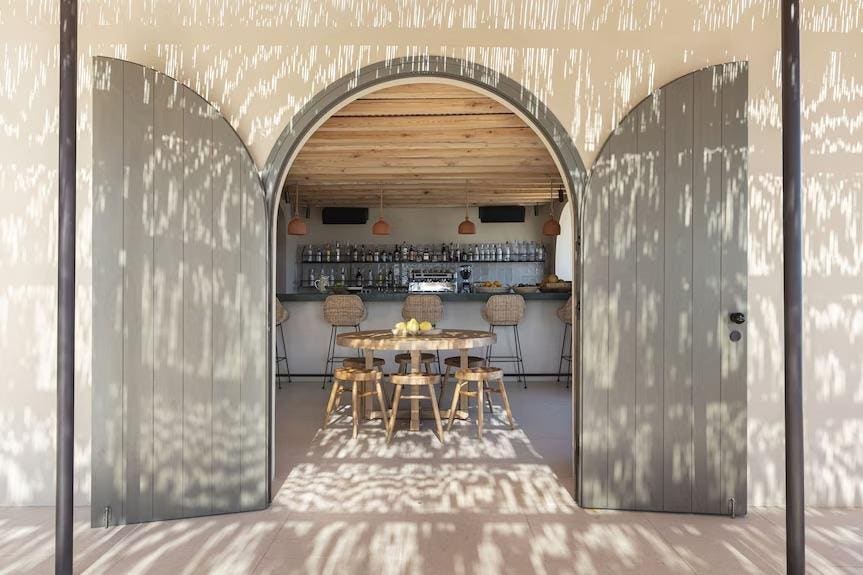
Hotel technology can get complicated. If I had to explain why this is to a kid or a golden retriever, I would say it’s because we used the best tools at our disposal at the time, stitching things together as best we could over years or even decades, and then tried to continuously pivot to newer, better systems while keeping the engine running.
Cumulatively, this has left every hotel with rigid, ‘legacy’ systems, siloed data, interfaces that are time-consuming to re-pipe, team members with specialized knowledge using one software or another, too many one-off access credentials leading to security vulnerabilities and a lot of single purpose, ‘best in breed’ solutions. Coming out of HITEC 2025 in Indianapolis this past June, I can finally say that we no longer have to operate this way.
As part of this quarter’s HN Thematics with Shiji Group, the educational focus has been on finally putting to bed the debate over best in breed versus all in one. The going consensus is that the latter has won, but in conversation with Ryan King, Senior Vice President of the Americas for Shiji Group, it’s mostly about migrating the tech stack towards a more consolidated hub-and-spoke architecture.
The Profile View of an Automobile
As hotel technology is often described as the engine that propels operations and profitability forward, let’s stick with this analogy by considering the profile or sideways view of a car. This equivalence seems all the more apt as Indy is the home of American car racing. Here you see a front wheel turning around an axle as well as a back wheel, with a chassis connecting the two and space for passengers above – our teams and guests.
Whether front-wheel or rear-wheel drive is besides the point for now; it’s more about picturing this dual hub-and-spoke model whereby the front wheel pertains to the governance of daily operations (PMS, GEMS, ancillaries, cleaning schedules, maintenance, payments, accounting) while the back wheel sits under the trunk where long-term items are stored (CRM, loyalty, membership, BI, ERP).
In reality, a hotel’s tech stack can still be far messier – a spaghetti diagram as yet another colloquial term for this. But what Shiji Group has done with their recent relaunch is to fuse both wheels and axles within a unified platform, using a series of internal, out-of-the-box microservices that serve as the underlying chassis
This unification connects the ‘daytime’ ops with the ‘overnight’ management that’s looking ahead. Visualizing the dual hub-and-spoke model in tandem with how hotel operations relate to the 24-hour circadian cycle gives us a clear comprehension behind the new taxonomy for some of Shiji Group’s product line.
- Daylight: what’s important during the workday – the PMS
- Meridian: what’s important at midday peak sun – the guest experience
- Horizon: what’s coming up insofar as operational pacing – distribution and ROB
- Twilight: reflecting on the day that was to improve tomorrow – analytics
Here it’s not about all-in-one but have a ready-made chassis with these core software pieces fulfilling these two wheels – the hubs – that can also accommodate any best-in-breed solutions that a specific hotel brand needs as the spokes.
In Real ‘Real’ Time
Great! We have a strong group of hotel tech products with seamless data transfers. What can we do with all this from the perspective of guest service?
The obvious answer to perhaps most of us is real-time service delivery and personalization at scale. Nevertheless, this deserves some unpacking, namely because the terms ‘in the cloud’ and ‘real time’ have been overused.
Electrons are fast – really, really fast – but they are not instantaneous. Moreover, they are made of matter, meaning they have to physically exist somewhere.
In the migration to more flexible, easier-to-update, cloud-based systems, one question that’s often skipped over is: where exactly does this system and its data reside? For hotel technology vendors with a firm client base in the United States, this likely means buying server space through a somewhere in Data Center Alley in Northern Virginia.
However much the customer-facing interfaces are edged, with guests and staff accessing different cloud-based software from around the global, ‘in real time’ means electrons being piped from one data center to another and another and another and another. All these nanoseconds can add up to a time that’s perceptible to human operators, compounded far further if these interfaces are set on an interval timer – that is, ‘near real time’.
With Shiji Group’s internal microservices, these interval timers between different software vendor interfaces are all but eliminated while the need for bouncing electrons amongst distinct data centers is minimized. To draw upon our automotive analogy, this means that the front and rear wheels are now perfectly in synchronization.
Translating this harmony to real-world guest service applications means that, first and foremost, there’s a central guest profile to enable personalization. For instance, CRM and loyalty data is instantly available for front desk agents to view and act upon so that hotels can finally stop asking returning guests, Have you stayed with us before? The reverse is also true, where operational notes during daylight hours can be ported over immediately into analytics and for automated service responses or marketing journeys.
My conversation with Ryan King ended up being roughly 45 minutes in length, but we were just getting warmed up on what those applications of these centralized, real-time data connections can enable. Alas, it was HITEC so we both only had a few wee hours to meet and greet so many old and new friends.
For now and for what you should take away, consider what type of car you’re trying to build. All automobiles have a front and back axle, but some are rusty, sputtering clunkers and some are Dallara IndyCars where every screw is tightened, every piston oiled, every gear calibrated with precision. My hope is that you’ll aim for the latter, and it starts by how your data is getting piped around between both hubs and all your various spokes.


